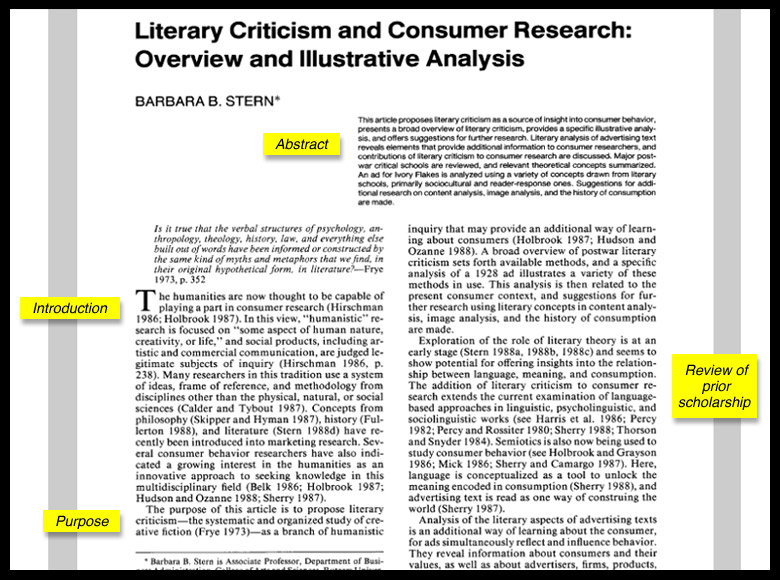Scholarly Journal Overview

- Audience: scholars, researchers, specialists.
- Reports results of original research aimed at certain disciplines in lengthy articles written in technical terms
- Written by experts, scholars, researchers who give their credentials and affiliations in the articles
- Reviewed by experts or peer reviewed
- Often present one subject area by scholarly societies
- Have a serious look with plain text, seldom glossy
- Usually have abstracts, graphs, or charts
- Have footnotes, sources cited, and bibliographies
- Have no advertising or very little
- Often published by professional organizations, scholarly societies, or universities
Sample Scholarly Journal Titles
JAMA(Journal of the American Medical Association)
Journal of African American History
Journal of Marriage and Family
Examples of a Scholarly Journal
The following example of an article on siblings from the Journal of Marriage and Family shows some of the details of what you may find in a scholarly journal:
- author and his/her affiliation (business or scholarly relationship)is identified;
- abstract or summary begins the article;
- citations within the text identifying the ideas and research of other authors;
- more information on the author's affiliation may be given at the end of the page or article.
- Tables and graphs throughout
- List of citations at the end
More About Scholarly Journals
For more information, check out this great resource from Noodletools:
Popular Magazine Overview

- Audience: general and casual readers
- Presents short articles on general information, current topics, or entertaining themes written in accessible language
- Written by reporters, freelance writers, or magazine staff often without credentials
- Reviewed by magazine editors
- Usually present many different subjects in one issue
- Have attractive and eye-catching style
- Have glossy pictures, graphics, cartoons, & illustrations
- Rarely have bibliographies or sources cited
- Have heavy advertising
- Published by general or commercial publishers or other media groups for profit
Sample Magazine Titles
Prevention
Jet
Parents
Example of a Magazine
The following example of an article from Foreign Policy magazine shows some of the details of what you may find in a popular article:
- author may be listed, but no affiliation or credentials;
- brightly colored pictures, less text;
- no citations or references;
- many colorful large advertisements
More about Popular Articles
For more information, check out these great resources from Noodletools:
Other Useful Definitions
Periodicals may be further divided up into scholarly journals, trade journals, news and general interest publications, popular magazines, and sensational publications. An example of each follows:
Scholarly - JAMA
Trade Journals - Advertising Age
News/General - Forbes
Popular - People Weekly
Sensational - National Enquirer